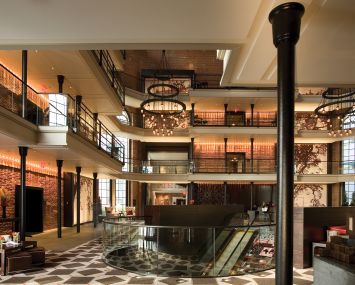The talk of the town in Brooklyn is the uncertainty surrounding the 421-a tax abatement. While that law may be up for debate, one law isn’t: supply and demand. And the shift in the tenancy of industrial buildings from manufacturing to retail uses is a clear and classic example of the law of supply and demand.
As the population of Brooklyn continues to grow, the need for retail space is growing as well.
Structures built for industrial use provide an opportunity for retailers to find large spaces to occupy that allow them to serve the needs of their customer base. It’s fascinating to see proud old buildings being repurposed in a way that allows them to once again be full of people and commerce.
This phenomenon is not without its detractors. There is an enduring myth that manufacturing space is somehow sacrosanct, and that the loss of affordable industrial space is hurting the manufacturing industry in New York City. That topic would consume more ink than this entire publication, but in the end the market is speaking, telling us, “Let’s go retail.”
But what makes an industrial space appealing to retailers? Everything is contingent on the particular needs and wants of a tenant, of course, but a few factors are generally applicable. Retailers tend to look for a large floor plate and higher ceiling heights in terms of structure. In some cases, the industrial aesthetics can be an influential attribute in appealing to retailers, from attractive facades to the allure of exposed brick. Most of all, though, it comes down to the same factor as every kind of real estate transaction: location, location, location.
Two recent high-profile examples come to mind:
Dumbo Heights, the former Watchtower portfolio purpose built by the Jehovah’s Witnesses for printing and administrative use, was purchased by Kushner Companies, RFR Realty and LIVWRK in 2013. The new owners sought to create a blend of uses that complemented one another and fit in with the burgeoning Tech Triangle. In order to maximize the properties’ value, having the appropriate retail tenant mix was critical to accommodating the needs of the upper-floor office tenants.
At Liberty View Industrial Plaza, we worked with ownership to create a retail environment as a small part of the 100-year-old former warehouse that totals over 1 million square feet of space. While a majority of the space is being preserved for industrial use, a still significant portion of the property has been slated for retail use. This includes the entire second floor, where Bed Bath & Beyond signed its well-documented lease for over 100,000 square feet to put four of its subsidiaries under one roof.
The impact on the surrounding neighborhoods will be immediate and powerful. In most cases, the buildings being converted have been vacant or underutilized for a long time.
The aforementioned Liberty View Plaza is a good example. The building was constructed in 1916 to serve as a warehouse for the U.S. Navy, and has sat empty since the year 2000. Now it will be the site of 1,300 industrial jobs and, with the pending arrival of Bed Bath & Beyond, hundreds of additional retail jobs.
More importantly, it is breathing life into a desolate stretch of Third Avenue in the permanent shadow of the Gowanus Expressway. Today, neighboring blocks are dominated by video peep shows and adult entertainment venues—not exactly the ideal mix of retail tenants for any area.
The infusion of retail to an area like Sunset Park will bring thousands of shoppers to the area on a weekly basis, and it won’t take long before other mainstream retailers replace the current tawdry establishments.
Over time, this trend will accelerate. We’ve already seen it take place in Williamsburg, and it’s underway in both the Gowanus and Sunset Park. With Brooklyn still under-retailed and garnering greater attention from national and international retailers, it’s only a matter of time before other former industrial and manufacturing areas of the borough realize the law of supply and demand is one that has never been repealed.
Timothy King is co-founder and managing partner of CPEX Real Estate.


